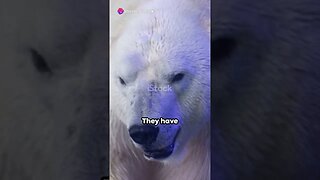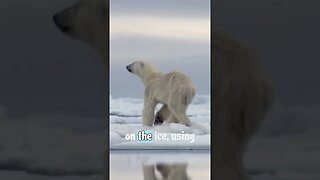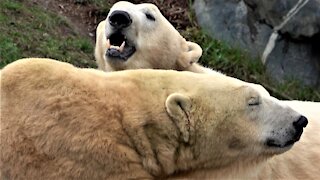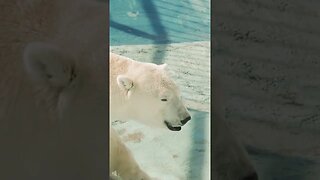7 Facts about Polar Bears #shorts #facts #polarbear
1 Name: Polar Bear
2 Scientific Name: Ursus maritimus
3 Family: Ursidae (the bear family)
4 Size: Polar bears are the largest bear species, with males weighing between 900 to 1,600 pounds (410 to 725 kilograms).
5 Habitat: They are primarily found in the Arctic region, including the Arctic Ocean, sea ice, and surrounding land.
6 Diet: Polar bears are carnivorous and mainly feed on seals, particularly ringed and bearded seals.
7 Paws: They have large, powerful paws with non-retractable claws, which help them grip the ice.
8 Fur: Their fur appears white but is actually translucent, with a layer of blubber underneath for insulation.
9 Swimming Ability: Polar bears are strong swimmers and can cover long distances in the water.
10 Conservation Status: They are classified as vulnerable due to the loss of sea ice caused by climate change.
11 Cubs: Female polar bears give birth to 1 to 3 cubs, typically in December or January.
12 Mating: Polar bears are solitary animals except during mating season.
13 Motherhood: Mothers are highly protective and teach their cubs essential survival skills.
14 Life Span: In the wild, they generally live up to 20-30 years.
15 Temperature Adaptation: Polar bears have adapted to extreme cold, with a low surface area-to-volume ratio, reducing heat loss.
16 Threats: Climate change and melting ice are the primary threats to their survival.
17 Stalking Technique: They stalk seals by waiting near breathing holes in the ice.
18 Arctic Apex Predators: Polar bears are the top predators in the Arctic food chain.
19 Inuit Culture: They have cultural significance for Indigenous peoples in the Arctic, like the Inuit.
20 Research: Scientists study polar bears to monitor their populations and understand the impact of climate change.
-
 0:50
0:50
Wizy1k
8 months agoPolar Bear Prowess: 10 Arctic Legends #shorts #polarbear
35 -
 0:59
0:59
Earth Media SPECIES 101
1 year agoWhy Polar Bears are the Most Fearsome Predators
2 -
 0:39
0:39
Dailydoseoffact
1 year agoPolar bears have black skin | Daily Dose Of Fact #shorts
3 -
 7:13
7:13
Tomorrow's World Viewpoint - Rumble
1 year agoPolar Bears are NOT Going Extinct!
10 -
 0:56
0:56
The Fable Factory
10 months agoFacts about Bears 🐻🐼
-
 0:56
0:56
Whattheheck2
2 years agoInteresting Facts about Polar Bears
19 -
 2:45
2:45
Simply Awesome Planet
1 month agoPolar Bears - Their Fur Is Not White At All ! Here's The Amazing Truth !
40 -
 1:49
1:49
WildCreatures
3 years ago $1.07 earnedPolar bears relax together for some play time and a nap
4.05K7 -
 0:59
0:59
Paws, Claws, & Jaws
1 year ago🐻 polar #bears #pawsclawsjaws #animalshorts
6 -
 0:29
0:29
Far Out With Faust
1 year agoPolar Bears Are Invisible 🐻❄️ #shorts
6